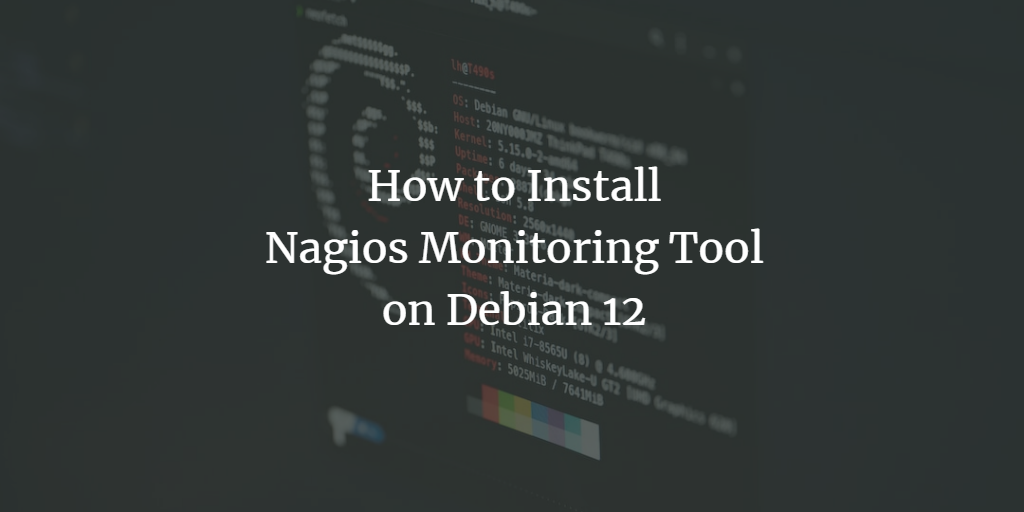Nagios is a robust, open-source monitoring system designed to track the health and performance of IT infrastructure. It offers real-time alerts and comprehensive status overviews for servers, networks, and applications, facilitating proactive problem resolution.
This guide will walk you through the installation of Nagios on a Debian 12 server using the package manager, which provides a quicker and easier setup than manual compilation.
Prerequisites
Ensure you have the following before beginning:
- A Debian 12 server.
- A non-root user with sudo privileges.
Installing Nagios on Debian
While you can manually compile Nagios, we’ll utilize the APT package manager for a streamlined installation process on Debian 12.
Start by updating your package index with the command below:
sudo apt update

After updating, install Nagios, the necessary monitoring plugins, and the Nagios NRPE plugin:
sudo apt install nagios4 nagios4-common monitoring-plugins-contrib nagios-nrpe-plugin
Press Y to continue. This will also install dependencies, including the Apache web server and PHP 8.2.
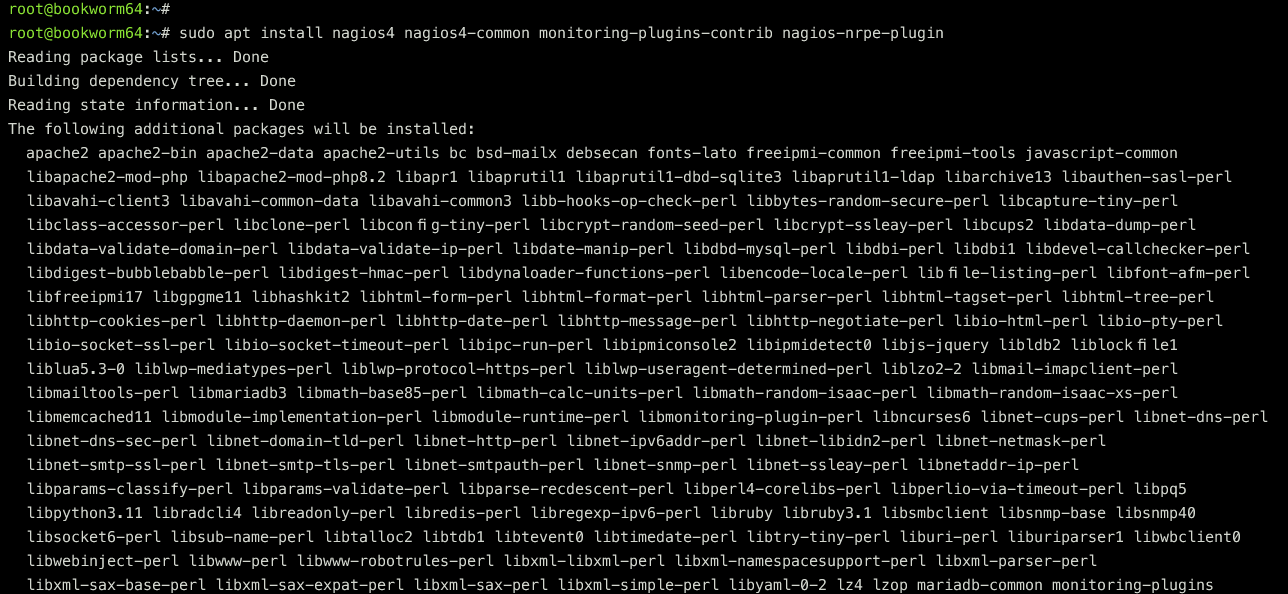
Enable the Nagios service to start at boot:
sudo systemctl enable nagios4
Verify that the Nagios service is active and enabled:
sudo systemctl is-enabled nagios4 sudo systemctl status nagios4
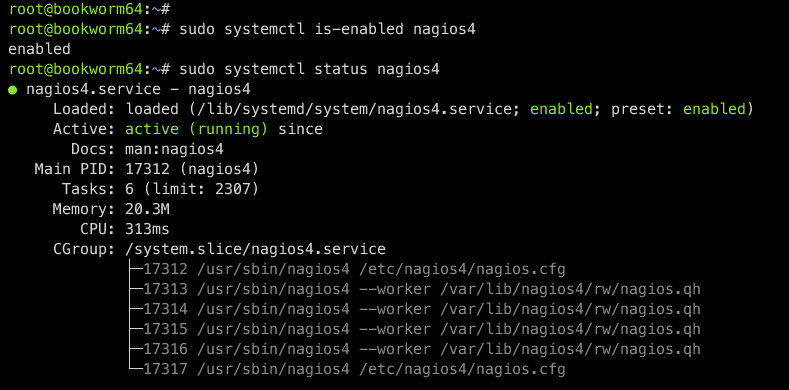
Check the Apache web server’s status to ensure it’s active:
sudo systemctl is-enabled apache2 sudo systemctl status apache2

Open your web browser and visit http://192.168.5.15/nagios4 to access the Nagios dashboard:

Nagios Configuration Files and Directories
Familiarize yourself with the main configuration files and directories for Nagios:
- /etc/nagios4: Default configuration directory for Nagios.
- /etc/apache2/conf-available/nagios4-cgi.conf: Integrates Nagios with the Apache web server.
- /etc/nagios-plugins: Directory for Nagios plugins.
- /usr/lib/nagios/plugins: Location for Nagios plugin check commands.
Enable Nagios Authentication
To secure your installation, enable authentication to restrict dashboard access.
Edit the Nagios CGI configuration file:
sudo nano /etc/nagios4/cgi.conf
Change use_authentication to 1:
# AUTHENTICATION USAGE use_authentication=1
Save your changes and restart Nagios:
sudo systemctl restart nagios4
Setting up Apache Basic Auth for Nagios
Implement basic authentication in Apache for additional security.
Enable Apache modules required for authentication:
sudo a2enmod cgi cgid rewrite

Edit the Apache configuration for Nagios:
sudo nano /etc/apache2/conf-available/nagios4-cgi.conf
Adjust the <DirectoryMatch … </DirectoryMatch> as follows:
<DirectoryMatch (/usr/share/nagios4/htdocs|/usr/lib/cgi-bin/nagios4|/etc/nagios4/stylesheets)> Options FollowSymLinks DirectoryIndex index.php index.html AllowOverride AuthConfig AuthName "Nagios Core" AuthType Basic AuthUserFile /etc/nagios4/htdigest.users Require valid-user Require all denied </DirectoryMatch>
Create a new user for Apache basic auth:
sudo htpasswd /etc/nagios4/htdigest.users nagiosadmin
Restart Apache to apply changes:
sudo systemctl restart apache2 sudo systemctl status apache2
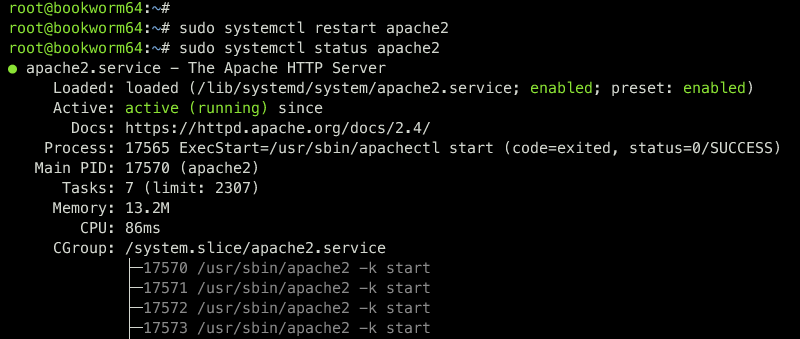
Accessing Nagios Installation with Authentication Enabled
Reload your Nagios page in a browser. You should see a login prompt:
Enter username nagiosadmin with the password you set. Click Sign In.
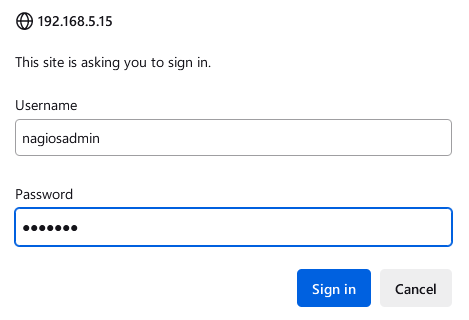
Upon successful login, the Nagios dashboard appears:

Through the Hosts menu, you can view all monitored hosts:
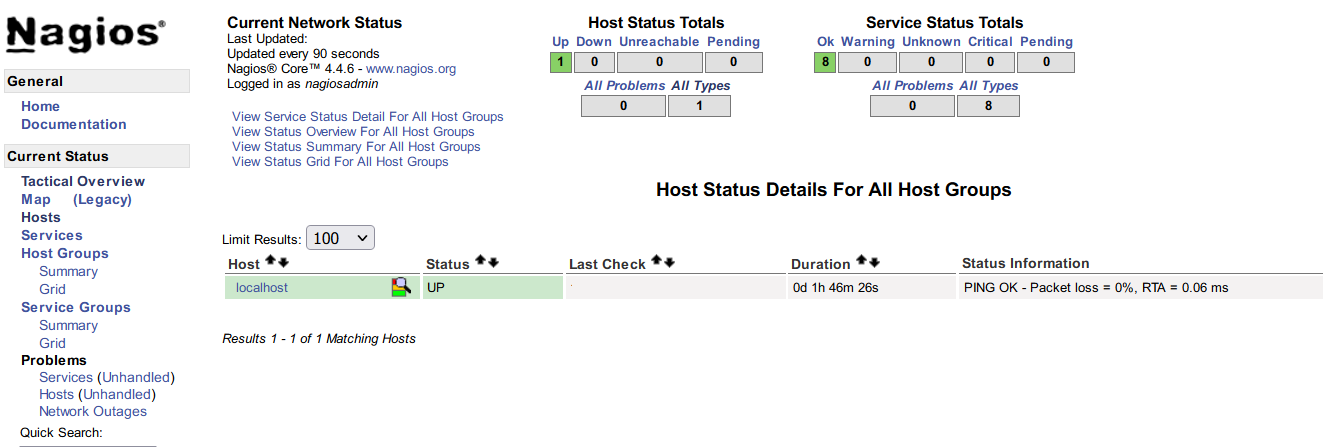
Check the Services menu to review default Nagios system monitoring options like system load, users, HTTP status, and more:

Conclusion
Congratulations on successfully installing and configuring Nagios on Debian 12! You’ve used the APT repository for a straightforward setup, implemented authentication, and secured your installation with Apache basic auth. Explore Nagios further to monitor more hosts and enhance your infrastructure management capabilities.
FAQ
What are the benefits of using Nagios?
Nagios provides comprehensive monitoring capabilities, real-time alerts, and detailed status reports for servers, networks, and applications, helping organizations identify and resolve issues before they impact the business.
Can I integrate Nagios with other IT management tools?
Yes, Nagios can be integrated with a wide range of plugins and third-party tools to extend its functionality and automate various IT operations.
Is Nagios free to use?
Yes, Nagios Core is free for download and use, being open-source software. However, enterprise-level editions and support services are available for a fee.
How often should I update Nagios?
It’s a good practice to regularly update Nagios and its plugins to ensure you have the latest features, security patches, and reliability improvements.
